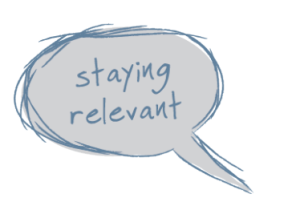 “The world has never been as complex, dynamic and uncertain as it is today and the pace of change will only increase.”
“The world has never been as complex, dynamic and uncertain as it is today and the pace of change will only increase.”We hear this consistently, our continual problem is trying to make sense of it.
Building Your Innovation Intelligence
Bringing my thinking and solutions to your problems
 “The world has never been as complex, dynamic and uncertain as it is today and the pace of change will only increase.”
“The world has never been as complex, dynamic and uncertain as it is today and the pace of change will only increase.” Our whole understanding of innovation is changing; there are numerous shifts occurring.
Our whole understanding of innovation is changing; there are numerous shifts occurring.
We are opening up our thinking about where and with whom, to collaborate.
We are evaluating and changing our existing focus from closed (internal orientation) into one that is having a far more open stance. We are searching for more collaborative innovation (external orientation) combining external partners into more ‘collective thinking’.
The shifts taking place are offering us the promise of “extra acceleration” that is needed to improve our innovation performances from concept to market delivery. Or, we hope it is!
Collaborative innovation is also leading us to higher chances of achieving greater impact and success, as nearly all novel ideas lay are mostly outside the organization’s domain of understanding. We need to always bring the knowledge inside and build from it.
As we increasingly include the customer and their more exacting needs within our understanding, these multiple collaborations and dialogues are building this better internal understanding to align our innovation with specific opportunities, relevancy and needs.
Continue reading “Opening up our innovation to stay relevant”
T hese are simply some opening thoughts. For a long time, I have become increasingly dissatisfied with the way we have managed or even depicted the innovation value chain.
hese are simply some opening thoughts. For a long time, I have become increasingly dissatisfied with the way we have managed or even depicted the innovation value chain.
I really think we should bring it up to date.
There has been such a considerable change taking place in many of the parts of innovation management, I think we need to replace the existing fuzzy front end, the pipeline and portfolio stage followed by execution with something far more reflective of how we think and what we deploy today as tools, methods and frameworks to deliver innovation.
The ‘old approach’ just does not calibrate anymore for me with where we have been heading, or more importantly in how we are attempting to manage innovation within our organizations.
So I feel we need to determine a new innovation value chain and would like to make the first attempt
Continue reading “The New Innovation Value Chain Perhaps?”

Thinking about ecosystems certainly allows us to go out of our normal scope of internally generating new products.
It opens up a host of possibilities, that can add significantly to a new service design, new capabilities and solving more complex problems.
In opening up to managing within ecosystems, you begin to see your ability to contribute and tackle societal problems within a collaborative system.
You can see new opportunities that can allow you to enter new markets that would have been impossible as an individual organization.
You begin to see the power, scale and strength of having the collective collaborative ability to extend beyond more traditional thinking design. You go beyond the utilization of leveraging existing infrastructure, building on others’ specializations and leveraging through technology powerful new concepts to tackle increasingly complex innovation design.
Continue reading “Innovators – are you thinking about Ecosystems?”
 Change is all around us, it is accelerating not abating. Do you feel you are trapped, encircled and just a little concerned.
Change is all around us, it is accelerating not abating. Do you feel you are trapped, encircled and just a little concerned.
You often hear of volatile trading conditions, a more complex market and situations changing constantly and moving faster than ever. ‘Much’ seems to be closing in on us.
We do know we need to re-equip ourselves for constant disruption; we are really beginning to see a shift from the classic bell curve into more of a shark fin for adopting change.
One that is characterized by sudden, even violent success or an event, some moments of brilliant dominance, followed by a dramatic change in conditions as others have spotted the same opportunity and you hit a rapid decline, the race to the bottom of competition constantly negating one another.
Market are segmenting, the life cycle is shortening or having an even longer tail of dealing with slow decline and constant erosion of any competitive position. The sharks are arriving even earlier and in a greater need to show their dominance.

 Where do you set about to intervene and begin to change the organization’s ability to innovate?
Where do you set about to intervene and begin to change the organization’s ability to innovate?
There are seemingly so many intervention points it can get bewildering.
The innovation environment can be made-up of how well you collaborate and network, the level of the group and individual interactions, the presence and commitment of leadership towards innovation, as well as the organizational set-up and structures.
You can explore the make-up of the innovation environment in so many ways.
It is the culture, management and its people who have a mutual dependency. Culture can enhance or inhibit the tendencies to innovate, it certainly has a profound influence on the innovative capacity and provides the rich nutrients to nurture innovation or kill it. Culture has always been regarded as a primary determinant of innovation.
Continue reading “Making an impact on an organization’s innovation environment”

As you may know, I have been writing significantly around the Three Horizons in relationship to innovation.
Initially drawing on the foundation within the McKinsey initial papers, updated here under their enduring ideas, and in particular based on by its original authors of the book “The Alchemy of Growth” by Mehrdad Baghai, Steve Coley, David White and Stephen ColeyThen I discovered the work of the International Futures Forum, based in Scotland, where a group of members have extended the 3H significantly, well beyond McK’s initial work from my perspective, into a broader, more robust methodology tackling complex problems.
It was this IFF work that excited me, it opened up my thinking to find better ways to deepen the innovation connections and framing that could be suggested in the use of this three horizon frame in exploring and expanding different techniques and approaches.
Continue reading “The Three Horizons – Providing a Common Language in its Innovation Use”

As we consider the interplay between innovation, business models and change, it becomes clear that many companies have a definition of innovation that’s far too narrow.
Increasingly we need to rethink the scope, depth and breadth of innovation possibilities, as well as the secondary implications of innovation.
Ignoring this broader definition of innovation means we can never achieve all of the possible benefits innovation has in store.
We believe ignoring the breadth and depth of innovation can also allow competitors and new entrants to disrupt your position or industry.
Fortunately, some of these definitions have been created for us.
Our responsibility is to understand the definitions and their implications, not stay constrained but seek and explore the broader options this can provide.
 There is always a certain impact that innovation brings, it should change habits, alter perceptions, improve our lives or alter the way we work and think.
There is always a certain impact that innovation brings, it should change habits, alter perceptions, improve our lives or alter the way we work and think.Each change brought about by innovation does have different impact effects upon three important market constituents: customers, the markets and the industries themselves but also and often totally under-appreciated, internally on the innovator driving the change.
Until we understand the scope and impact of innovation we can’t fully grasp the nature and amount of change that innovation can unleash. It can alter businesses, shift markets and challenge customers to move away from their existing thinking into adopt this new product or service.
Continue reading “The Interplay in 3 Essential Change Points for Innovation”
 Innovation should be the primary source of real change. Often when exciting new innovations occur they have the power to significantly change our habits, and choice of product, preferences and ways we set about our daily lives.
Innovation should be the primary source of real change. Often when exciting new innovations occur they have the power to significantly change our habits, and choice of product, preferences and ways we set about our daily lives.
Yet why is it we often ignore the power of change when we design innovation?
We often fail to fully appreciate the changes that are occurring from the innovation we produce, it often seems an afterthought, there is this lead and lag effect and needs, firstly recognition and then addressing in how we manage innovation going forward.
In a recent series introduced initially and given a feature of the week prime spot on www.innovationexcellence.com on June 7, 2015, we discussed the importance of the emerging interplays.
This series will be re-produced here as it is an important concept to consider all the aspects within any innovation interplay.